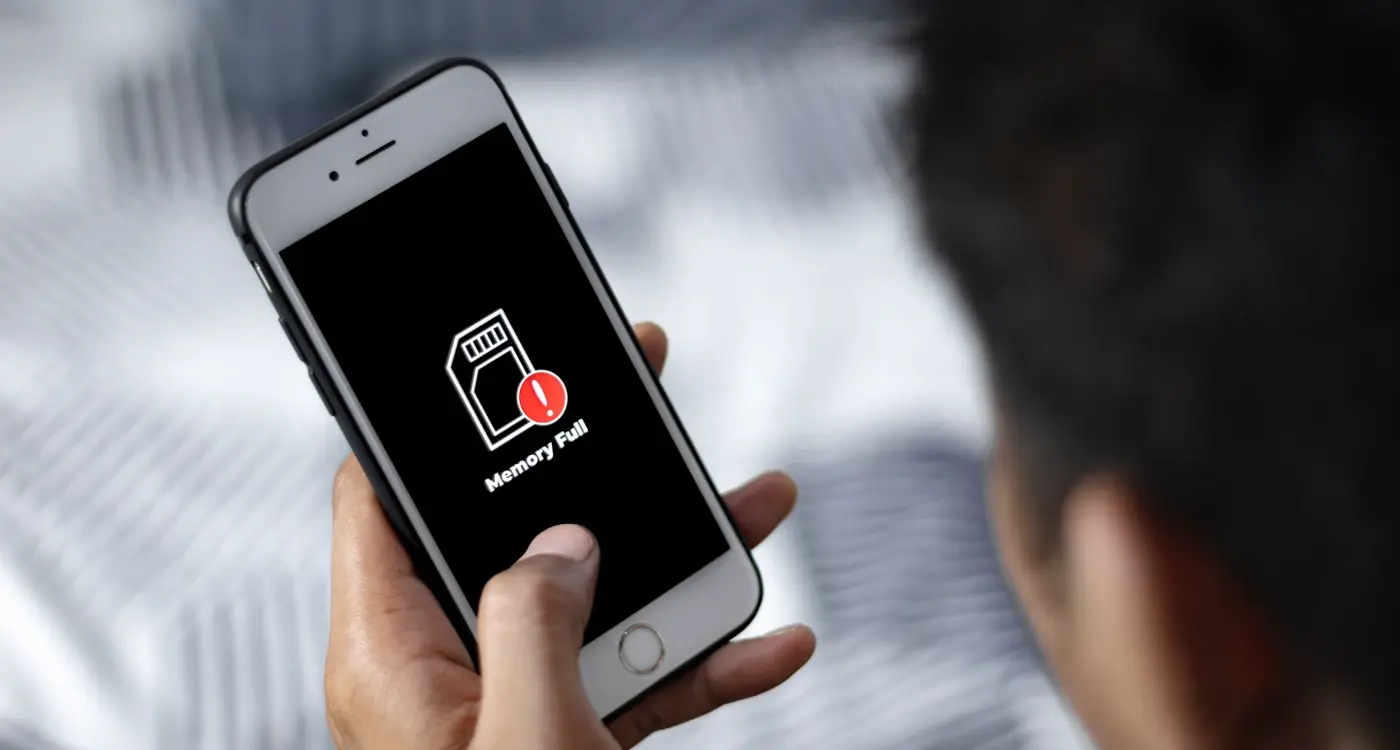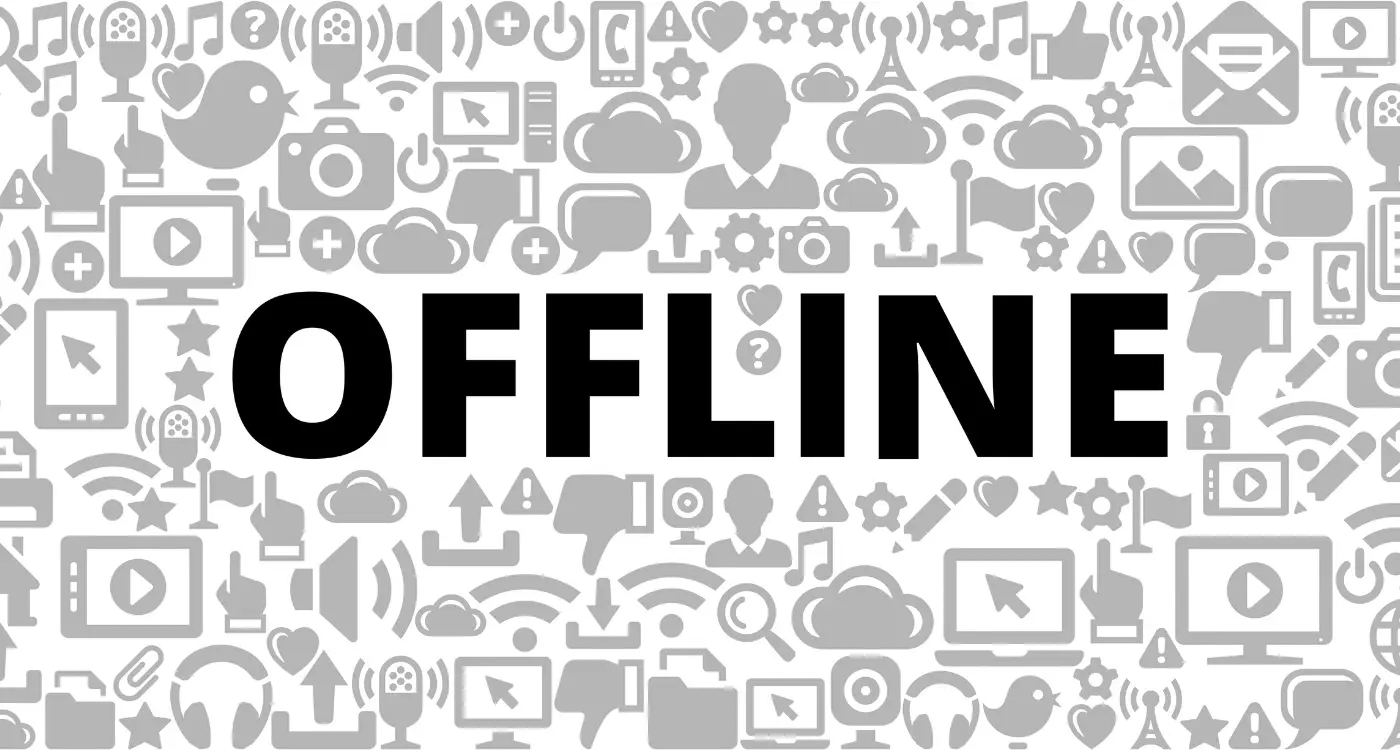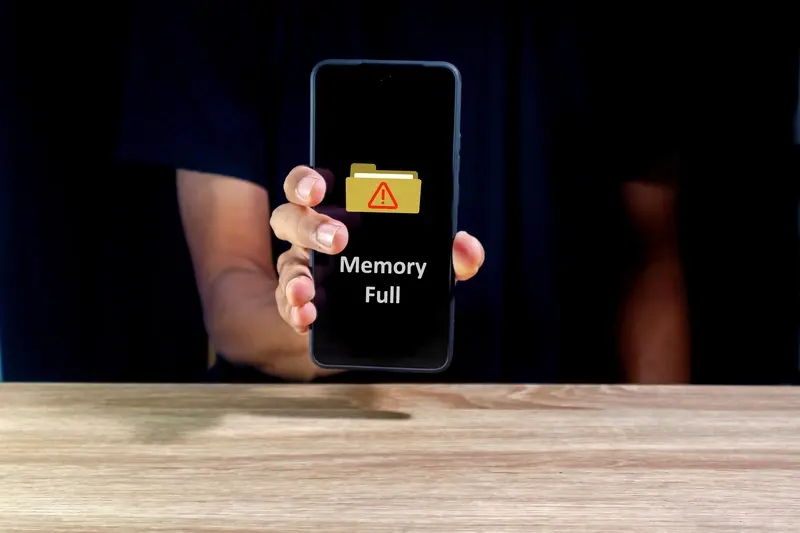How Do I Handle Music Storage And Streaming Without Breaking The Bank?
You've got thousands of songs you love, maybe tens of thousands, and every month your collection grows. But here's the thing—storing all that music and streaming it without spending a fortune feels impossible these days. Your phone runs out of space, cloud storage bills keep climbing, and streaming services want more money for features you thought were included. Sound familiar?
I've been working with app developers and music platforms for years, and this storage dilemma comes up constantly. People want their entire music library available anywhere, anytime, but they don't want to pay through the nose for it. The good news? There are smart ways to handle music storage and streaming that won't empty your wallet—you just need to know what you're doing.
The biggest mistake people make is thinking they need to store everything in the most expensive way possible, when actually a mix of storage methods works much better
This guide will walk you through the real costs behind music storage and streaming, from the obvious monthly fees to the sneaky charges nobody tells you about. We'll look at cloud versus local storage, explore budget-friendly infrastructure options, and show you how to cut your data costs without sacrificing quality. By the end, you'll know exactly how to build a music setup that works for your needs and your budget—whether you're managing a personal collection or building something bigger.
Understanding Music Storage Basics
Music storage might seem straightforward—you've got files, you need somewhere to put them. But when you're building a music app or managing audio content at scale, there's quite a bit more to consider than simply dumping MP3s onto a server and hoping for the best.
Let's start with the fundamentals. Music files come in different formats, and each has its own storage requirements. An uncompressed WAV file can easily be 50MB for a single song, whilst an MP3 might be just 4MB for the same track. That difference adds up fast when you're storing thousands of songs.
File Formats and Their Impact
The format you choose affects everything from storage costs to streaming quality. Here are the main formats you'll encounter:
- MP3 - Small files, decent quality, works everywhere
- AAC - Better quality than MP3 at similar file sizes
- FLAC - Lossless compression, much larger files
- WAV - Uncompressed, highest quality, massive files
- OGG - Open source alternative, good compression
Storage isn't just about the files themselves though. You'll need to think about metadata—artist names, album artwork, lyrics, and other information that makes your music searchable and organised. This metadata can actually take up significant space when you're dealing with large catalogues.
Where Your Files Actually Live
Your music needs to live somewhere accessible to your users, which means choosing between local storage on devices or remote storage in the cloud. Local storage is fast but limited—most phones don't have room for thousands of songs. Cloud storage gives you unlimited space but requires internet connections and costs money for bandwidth every time someone streams a track.
The key is understanding that storage costs aren't just about the space your files occupy; they're about how often people access them, how quickly they need to load, and how reliably they need to be available.
Choosing Between Cloud And Local Storage
When you're building a music app, one of the biggest decisions you'll face is where to store all those songs. Do you keep everything on the user's device or send it all up to the cloud? Both options have their pros and cons, and the choice you make will directly impact your infrastructure costs.
Local storage means keeping music files directly on someone's phone or tablet. It's fast—no waiting for downloads when you want to listen. Users can play their music even without an internet connection, which is brilliant for commutes through tunnels or areas with poor signal. But here's the thing: modern music files are huge, and phones don't have unlimited space. A single high-quality album can take up 100MB or more.
Start with a hybrid approach—cache frequently played songs locally whilst keeping the full library in the cloud to balance speed and storage costs.
Cloud Storage Benefits and Drawbacks
Cloud storage flips the script completely. Your music lives on remote servers, and users stream what they need. This means unlimited libraries without filling up their devices. You can offer millions of songs without worrying about storage limits. The downside? You're paying for server space, bandwidth, and content delivery networks. Every time someone plays a song, it costs you money.
Making the Right Choice for Your Budget
The truth is, most successful music apps use both. They stream from the cloud but cache popular tracks locally. This reduces your bandwidth costs whilst keeping the user experience smooth. Understanding whether your music app should work offline or only stream online is crucial for making the right architectural decisions. Here's what different approaches typically cost:
- Pure cloud storage: High ongoing costs, scales with usage
- Local-only storage: Low running costs, limited by device capacity
- Hybrid approach: Moderate costs, best user experience
- Progressive download: Medium costs, good for growing apps
Streaming Service Costs And Hidden Fees
Music streaming services love to advertise their low monthly prices, but what they don't shout about are all the extra costs that can creep up on you. I've seen too many people get caught out by these sneaky charges—and trust me, they add up faster than you'd think.
The obvious cost is your monthly subscription fee, which ranges from about £5 to £15 depending on the service and plan you choose. But here's where it gets tricky: most streaming services have different pricing tiers that aren't always clearly explained upfront.
Common Hidden Costs to Watch For
- Higher quality audio streaming (often costs extra per month)
- Offline downloads with storage limits that require upgrades
- Family plan restrictions that force you into pricier options
- Regional content limitations requiring VPN services
- Data charges from your mobile provider when streaming on the go
- Artist merchandise and concert ticket sales pushed through the app
Data usage is probably the biggest hidden cost that catches people off guard. Streaming music can use between 40MB to 320MB per hour depending on quality settings. If you're not on an unlimited data plan, this can push you over your monthly allowance and trigger expensive overage charges from your mobile network.
Some services also limit how many times you can download songs for offline listening, or they expire your downloads after a certain period. This means you might need to upgrade to a premium tier just to keep your favourite tracks available when you're not connected to WiFi.
The smart move? Read the fine print before signing up, set data limits on your phone, and always check what features are included at each price level. The competition between music streaming services like Spotify and Apple Music means there are often deals and promotions available if you shop around.
Building Your Own Music Infrastructure
Right, let's talk about the big decision—building your own music infrastructure. This isn't for the faint-hearted or those with tight budgets, but if you're serious about music storage and want complete control, it might be worth exploring.
The main benefit of building your own setup is that you own everything. Your music files, your servers, your streaming setup—it's all yours. No monthly fees to streaming services, no worrying about songs disappearing from platforms, and no data limits imposed by others. You decide how much storage you need and how fast your streaming should be.
What You'll Actually Need
Building music infrastructure means setting up your own servers, storage drives, and streaming software. You'll need a decent internet connection for uploading and streaming, plus backup systems so you don't lose everything if something breaks. The upfront costs can be hefty—we're talking thousands for a proper setup—but the running costs are much lower than paying for multiple streaming services long-term.
Is It Worth The Effort?
Here's the thing: most people don't need their own infrastructure. If you're just storing a personal music collection, cloud storage or a simple home server will do the job. But if you're running a business, managing music for multiple users, or you're a serious audiophile with massive collections, building your own setup starts making financial sense.
The beauty of owning your infrastructure is that you're not at the mercy of changing subscription prices or service shutdowns
Before jumping in, calculate the real costs over three to five years. Include hardware, electricity, internet upgrades, and your time for maintenance. Sometimes paying for existing services works out cheaper—and definitely easier. Understanding the full costs of building a music streaming app will help you make an informed decision.
Smart Storage Solutions For Different Budgets
Let's be honest—music storage doesn't have to cost a fortune, but it does require some planning. I've worked with countless clients who've made expensive mistakes simply because they didn't understand their options. The good news? There's a solution for every budget, from tight student finances to enterprise-level requirements.
Budget-Friendly Options That Actually Work
If you're working with limited funds, start with what you already have. Most smartphones come with decent storage these days, and you can often expand this with affordable microSD cards. Cloud storage services offer free tiers that might surprise you—Google Drive gives you 15GB, Dropbox offers 2GB, and iCloud provides 5GB without spending a penny.
Streaming services like Spotify and Apple Music cost around £10 monthly, which works out cheaper than buying individual albums if you listen to more than one new album per month. The maths is straightforward here.
Mid-Range and Premium Solutions
Got a bit more to spend? External hard drives offer excellent value—a 1TB drive costs roughly the same as three months of premium streaming but lasts for years. Network-attached storage (NAS) systems let you create your own personal cloud, accessible from anywhere with an internet connection.
- Free cloud storage tiers (0-15GB typically)
- MicroSD cards for phone expansion (32GB-1TB)
- External hard drives for computer storage
- NAS systems for home networks
- Premium cloud storage subscriptions
- High-capacity SSDs for faster access
The key is matching your storage method to your listening habits and technical comfort level. Don't pay for features you won't use, but don't skimp on reliability either—losing your entire music collection isn't worth saving a few pounds. There are budget-friendly approaches to app development that can help you build better solutions without overspending.
Reducing Data Usage And Bandwidth Costs
Data costs can absolutely destroy your budget when you're dealing with music storage and streaming. I've seen plenty of people get shocked by their bills because they didn't understand how much data music actually uses—and trust me, it adds up fast.
The biggest culprit is streaming quality. Most apps default to high-quality streaming, which sounds great but uses massive amounts of data. A single high-quality song can use up to 10MB, whilst a lower quality version might only use 2-3MB. That difference becomes huge when you're listening to hundreds of songs each month.
Smart Streaming Strategies
Download your favourite tracks when you're connected to WiFi instead of streaming them repeatedly. Most music apps let you download songs for offline listening, which means you only use data once per song rather than every time you play it. This simple switch can cut your data usage by 70-80% if you listen to the same songs regularly.
Set your music app to "WiFi only" for downloads and reduce streaming quality to "normal" instead of "high" when using mobile data—you'll barely notice the difference in sound quality but you'll definitely notice the savings on your bill.
Infrastructure Considerations
If you're building your own music infrastructure, bandwidth costs will be one of your biggest ongoing expenses. Content delivery networks can help reduce these costs by serving music files from servers closer to your users. You can also implement smart caching—storing popular songs on faster servers whilst keeping less popular tracks on cheaper storage tiers.
Monitor your bandwidth usage closely and set up alerts when you're approaching your limits. Many hosting providers offer significant discounts for predictable usage patterns, so understanding your peak times can lead to better pricing deals. The key is creating stellar apps that optimise performance whilst managing costs effectively.
Managing Rights And Licensing Without Overspending
Music licensing is one of those things that can catch you completely off guard when building an app. I've seen developers assume they can just grab any track they fancy and pop it into their app—then get hit with legal notices that make their eyes water. The truth is, every piece of music has someone who owns it, and they want paying.
There are two main types of music rights you need to worry about: the composition (the actual song) and the recording (the specific version you hear). Both need separate licences, which means double the cost if you're not careful. The good news? You don't have to break the bank to get decent music for your app.
Budget-Friendly Licensing Options
Your cheapest bet is royalty-free music libraries. These aren't actually free—confusing name, I know—but you pay once and use the track forever. Sites like AudioJungle and Pond5 offer decent quality tracks for under £50 each. Not bad when you compare it to mainstream tracks that can cost thousands.
Creative Commons music is another goldmine; some tracks are completely free as long as you credit the artist. Just make sure you read the licence terms properly—some require you to share your app under the same licence, which probably isn't what you want.
What to Avoid
- Popular chart music—the licensing fees will destroy your budget
- Using tracks without checking the licence terms first
- Assuming "royalty-free" means completely free
- Forgetting about performance rights if your app plays music publicly
- Not keeping records of your licence agreements
The key is planning your music budget early and sticking to it. Factor in licensing costs from day one, not as an afterthought when your app is nearly finished.
Conclusion
After working with countless music apps over the years, I can tell you that managing music storage and streaming costs doesn't have to drain your budget—but it does require some smart thinking. The key is understanding that there's no one-size-fits-all solution; what works for a bedroom producer streaming their first tracks will look completely different from what a major label needs for their entire catalogue.
The most successful projects I've seen start by getting their infrastructure foundations right. They pick the storage approach that matches their actual usage patterns—not what they think they might need someday. Cloud storage works brilliantly for flexibility, but local storage can save you thousands if you're dealing with large file libraries that don't change much. The magic happens when you combine both approaches strategically.
Streaming costs are where most people get caught out, and it's usually because they haven't done their homework on bandwidth pricing and data transfer fees. Those hidden charges add up fast; I've seen monthly bills triple just because someone didn't understand how their CDN pricing worked. Smart caching and compression can cut your costs dramatically without your users noticing any difference in quality.
The licensing side might seem daunting, but there are ways to structure your deals that won't break your budget. Start small, negotiate based on actual usage rather than projections, and don't be afraid to use mechanical licensing organisations—they exist to make your life easier.
Building sustainable music infrastructure is about making informed choices, not expensive ones. Get the basics right first, then scale smartly as your needs grow.
Share this
Subscribe To Our Learning Centre
You May Also Like
These Related Guides

How Much Storage Space Does Offline Functionality Need?

How Do I Design for Offline Functionality in My App?



